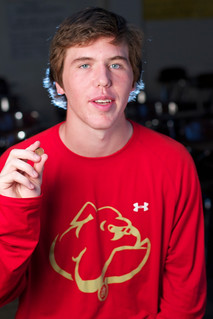Recently some colleagues and I interviewed teachers who live hundreds of miles apart and asked them about how they design their educational spaces. Whether it was the high school art teacher, the middle school technology teacher, or the college philosophy professor who teaches both face-to-face and online courses, all of them spoke of the importance of developing individual problem solvers, but also about fostering valued members of their larger learning communities.
All of three of these educators spoke of student ownership of their learning, even of the environment itself, a shared enterprise where the teachers is also a member of the learning community.
This reminded me of an article by Larry Sanger (co-founder of Wikipedia), "Individual Knowledge in the Internet Age." Obviously Sanger sees the positives of cooperative learning, but in the article Sanger reflects on how the Internet is changing education and among other things warns against the celebration of the virtues of collaborative learning as superior to "outmoded" individual learning. He writes, “my notion of a good scholar is someone who is capable of thinking independently.... Reading, writing, critical thinking, and calculation should make up the vast bulk of a liberal education. Social learning could not replace these individual, 'Cartesian' activities without jettisoning liberal education itself.”
 |
| Cracks of Life by Montana Sage |
Sanger’s arguments remind me of what Howard Gardner calls the “disciplined” mind: "As the world we inhabit continues to change, educators must frequently reevaluate the goals of education, and the types of "minds" we wish to cultivate." Like Larry Sanger and the teachers we interviewed, Gardner's minds are a balance of the individual who has learned deeply and has cultivated a commitment to their larger communities.


